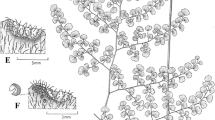Summary
European Salix species fall into at least 2 groups on the nature of the secondary compounds in their leaves. Some species such as S. nigricans, S. purpurea and S. fragilis contain phenolglycosides in their leaves. Additionally, there are species such as S. alba, S. caprea and S. cinerea with leaves containing no phenolglycosides.
Using published food plant list for the weevils, the sawflies and the caterpillars of the British moth, I tried to see if the presence or absence of phenolglycosides in the willow leaves is related to the degree of dietary specialisation of the insects feeding on these leaves.
The results show that the Salix with phenolglycosides tend to be the food of the specialised herbivores and to be avoided by generalist. Conversely, Salix without phenolglycosides tend to be eaten by more generalist insects and are avoided by the more specialised.
Moreover, the faunas of the different Salix species with phenolglycosides in their leaves are more similar to each other than to the faunas of the Salix species having no phenolglycosides in their leaves.
Similar content being viewed by others
References
Barr AJ, Goodnight JH, Sall JP, Blair WH, Chilko DM (1979) SAS User's Guide. SAS Institute, Raleigh, North Carolina, USA
Berenbaum M (1981) Patterns of furanocoumarin distribution and insect herbivory in the Umbelliferae: plant chemistry and community structure. Ecology 62 (5):1254–1266
Edwards WRN (1978) Effect of salicin content on palatability of Populus foliage to opossum (Trichosurus vulpecula). New Zealand Journal of Science 21:103–106
Hegnauer R (1973) Chemotaxonomie der Pflanzen VI. Birkhäuser, Basel, Stuttgart
Hoffman A (1978) Faune de France, Coléoptère Curculionides, 62:1782–1785
Lawton JH (1978) Host plant influences on insect diversity: the effect of space and time. In The diversity of insect faunas: Symposium Royal Entomological Society London, editors Mound and Waloff, 9:105–125
Lorenz H, Krauss M (1957) Die Larvalsystematik der Blattwespen (Tenthedinoidea and Megalodontoidea). Akademie Berlin, pp 312–324
Marks V, Smith MJH, Cunliffe AC (1961) The mechanism of the anti-inflammatory activity of salicylate. J of Pharmacy and Pharmacology 13:218–223
Pasteels JM (In press) Défense chimique chez les Chrysomèles: considérations taxonomiques et ecologiques. Annales Société entomologique de France
Pasteels JM, Braekman JC, Daloze D, Ottinger R (1982) Chemical defence in chrysomelid larvae and adults. Tetrahedron 38 (13):1891–1897
Pasteels JM, Rowell-Rahier M, Braekman JC, Dupont A (1983) Salicin from host plant as precursor of salicylaldehyde in defensive secretion of Chrysomeline larvae. Physiological Entomology 8:307–314
Rowell-Rahier M, Pasteels JM (1982) The significance of salicin for a Salix-feeder, Phratora (Phyllodecta) vitellinae. Proc. 5th international symposium on Insect-Plant Relationships, Wageningen, Pudoc, pp 73–79
Sokal RR, Rohlf FJ (1969) Biometry, the principles and practice of statistics in biological research. WH Freeman and Company, San Francisco
South R (1948) The caterpillars of British moths. Frederick Warne & Co. London & New York
Southwood TRE, Moran VC, Kennedy C (1982a) The richness, abundance and biomass of the arthropod communities on trees. J of animal Ecology 51:635–649
Southwood TRE, Moran VC, Kennedy C (1982b) The assessement of arboreal fauna: comparisons of knockdown sampling and faunal list. Ecological Entomology 7:331–340
Sticher O, Egloof C, Bettschart A (1981) Isolierung und quantitative Bestimmung von Phenolglykosiden aus Salix species. Planta medica 42:126–127
Thieme H (1965) Die Phenolglykoside der Salicaceen. Planta medica 13:431–438
Thieme H, Benecke R (1970) Die Phenolglykosiden der Salicaceen. Pharmazie 25:227–231
Vickery ML, Vickery B (1981) Secondary plant metabolism. The Macmillan Press
Author information
Authors and Affiliations
Rights and permissions
About this article
Cite this article
Rowell-Rahier, M. The presence or absence of phenolglycosides in Salix (Salicaceae) leaves and the level of dietary specialisation of some of their herbivorous insects. Oecologia 62, 26–30 (1984). https://doi.org/10.1007/BF00377368
Received:
Issue Date:
DOI: https://doi.org/10.1007/BF00377368




